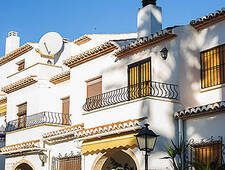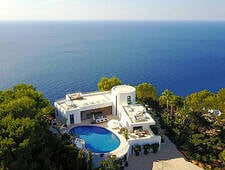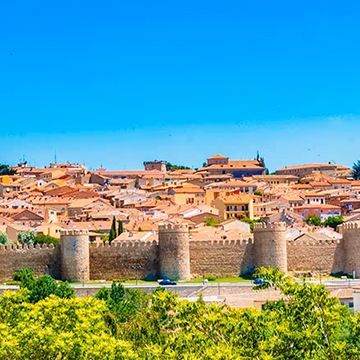 Are you looking to buy and revitalize a historic Spanish property? Spain, with its rich cultural heritage and vast architectural legacy, has become a prime destination for those drawn to the charm of old-world homes. From romantic countryside fincas to grand historic mansions and even the occasional chateau for sale in Spain in need of renovation, the country offers unique opportunities for buyers looking to restore character-filled properties. Whether you dream of a private family retreat or envision turning a once-forgotten villa into a boutique hotel or museum, restoring old houses in Spain can be both a personal and financial triumph.
Are you looking to buy and revitalize a historic Spanish property? Spain, with its rich cultural heritage and vast architectural legacy, has become a prime destination for those drawn to the charm of old-world homes. From romantic countryside fincas to grand historic mansions and even the occasional chateau for sale in Spain in need of renovation, the country offers unique opportunities for buyers looking to restore character-filled properties. Whether you dream of a private family retreat or envision turning a once-forgotten villa into a boutique hotel or museum, restoring old houses in Spain can be both a personal and financial triumph.
Why Buy a Renovation Property in Spain?
There’s a growing market for renovation property in Spain, driven by international investors, nostalgic buyers, and creative entrepreneurs. Restoring historic houses offers not only the potential for increased property value but also the emotional satisfaction of preserving a piece of history.
Many historic homes for sale in Spain are located in picturesque villages or along stunning coastlines. These properties are often more affordable than modern builds, especially those in need of work. Renovating a property guarantees an almost immediate increase in value while allowing the owner to tailor the space to their preferences.
Post-pandemic lifestyle changes have further fueled interest in rural and character-rich homes. Spacious interiors, natural materials, and outdoor living areas are now top priorities—traits that old Spanish properties offer in abundance.
Revitalizing a historic property in Spain holds unique appeal for a niche market of buyers—those drawn to cultural preservation, architectural storytelling, and the opportunity to create something one-of-a-kind. These are not your average property hunters; they’re artists, hoteliers, designers, and lifestyle entrepreneurs who see the potential in turning ruins into retreats or relics into revenue. For investors, such properties also offer a differentiated portfolio asset with high-value growth potential and emotional marketability that modern builds simply can’t match.
What Type of Properties Are Available?
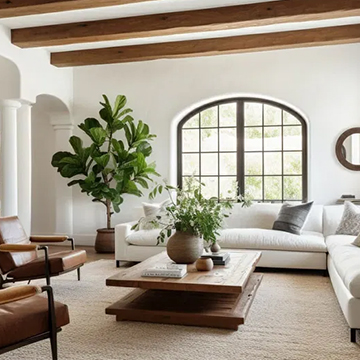 Spain’s historic real estate market is diverse. You’ll find everything from rustic farmhouses in Andalusia to stone houses in Galicia, medieval townhomes in Castilla y León, and Catalan masías (country estates). A quick search online yields numerous houses to renovate in Spain, ranging from small village homes to larger historic houses in Spain with hundreds of years of history.
Spain’s historic real estate market is diverse. You’ll find everything from rustic farmhouses in Andalusia to stone houses in Galicia, medieval townhomes in Castilla y León, and Catalan masías (country estates). A quick search online yields numerous houses to renovate in Spain, ranging from small village homes to larger historic houses in Spain with hundreds of years of history.
Of special interest are renovation properties for sale in Spain that have tourism potential. Many buyers convert these into hotels, guesthouses, or cultural centers, turning a passion project into a sustainable business.
Key Considerations Before Starting Renovation
1. Define the Purpose of the Property
Is your project for private living, short-term rentals, or a commercial venture? Your approach to property renovation in Spain will vary depending on the end use. A tourist accommodation will require different design priorities, like more bathrooms or multiple guest rooms, while a private home might focus on comfort and energy efficiency.
2. Structural and Technical Assessment
Before making any changes, it’s critical to conduct a technical inspection of the electrical, plumbing, and insulation systems. Many older Spanish homes lack central heating or air conditioning, so installing these is often essential.
Also, assess the structure itself. Are the walls load-bearing? Can you open the layout? Does the home receive enough natural light? Traditionally, Spanish homes were built to block heat and sun, so darker interiors are common.
3. Preserve Traditional Features
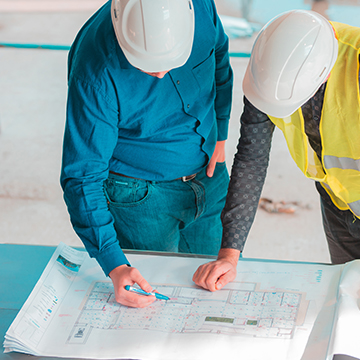 If you’re planning to undertake a restoration, be sure to highlight authentic materials and architecture. Buyers and tenants alike value:
If you’re planning to undertake a restoration, be sure to highlight authentic materials and architecture. Buyers and tenants alike value:
- Wooden beams and exposed stone
- Terracotta floors and handmade tiles
- Arched doorways and iron fixtures
We recommend reading our detailed guide on traditional Spanish home design for a deeper understanding of these elements.
Legal Requirements and Permits
Spain’s renovation rules are regulated at the local level, meaning processes and requirements can vary from one region to another. However, the general permitting system follows two main categories:
- Licencia de Obra Menor (Minor Works Permit): For basic renovations like window installations, floor replacements, or bathroom upgrades. Processing time: 1–3 months.
- Licencia de Obra Mayor (Major Works Permit): Required for structural changes, extensions, or major renovations. Processing time: 3–6 months, potentially more.
If the property is located in a historic district or near the coast, additional permissions may apply. In protected heritage areas, modifications must respect the original design, and certain materials or building techniques may be mandated by law.
Failure to obtain the correct licenses can result in fines ranging from €600 to over €1,000, or in serious cases, forced demolition.
Also, you must inform the community of co-owners (comunidad de propietarios) if the property is within a shared building. Neighbors may legally challenge unauthorized work.
VAT & Tax Incentives for Renovations
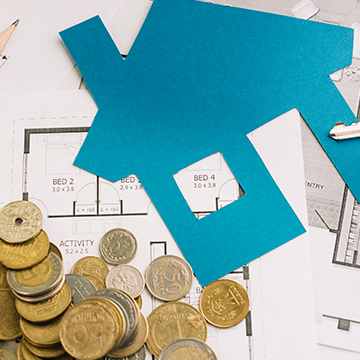 Renovation work in Spain can benefit from reduced VAT:
Renovation work in Spain can benefit from reduced VAT:
10% VAT (compared to the usual 21%) applies if:
- The property is a private residence
- The building is over 2 years old
- Materials provided by the contractor don’t exceed 40% of the total bill
You should always consult a tax advisor to ensure eligibility and compliance.
Additionally, several regions offer financial aid, especially for energy-efficient upgrades or restoration of historic homes:
Regional Subsidy Highlights
- Andalusia: Grants through the Rehabilitación Residencial program—up to 40% coverage.
- Catalonia: PREE 5000 program for energy-efficient upgrades.
- Madrid: Rehabilita Plan—grants covering up to 50% of the project.
- Valencia: Funding for conservation through the Conservación y Rehabilitación del Patrimonio Arquitectónico—up to 50% of costs.
These incentives make renovation in Spain more affordable and attractive, especially for larger-scale restorations.
Design & Renovation Trends in Spain
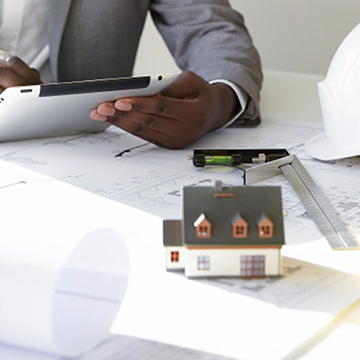 Today’s buyers and tenants have clear expectations, especially international ones. The most valued renovation elements include:
Today’s buyers and tenants have clear expectations, especially international ones. The most valued renovation elements include:
- Modern bathrooms and kitchens
- Outdoor living areas (gardens, patios, terraces)
- Energy-efficient windows and insulation
- Air conditioning and heating systems
- Reclaimed or original materials for aesthetic appeal
Restoration hardware in Spain—ranging from antique doors to artisan tilework—is increasingly popular. Reuse and sustainability are trends that align perfectly with the ethos of preserving historical homes.
Project Timeframes and Challenges
Restoration timelines vary widely depending on the property’s condition and the depth of your plans. A basic renovation can take as little as six months, while larger structural work or luxury refits could stretch to 18–24 months.
Potential Hurdles:
- Permit Delays: Regional bureaucracies can slow progress.
- Material Shortages: Depending on the region, some materials may need to be sourced from afar.
- Unforeseen Damage: Old properties often hide issues like water damage, termites, or crumbling foundations.
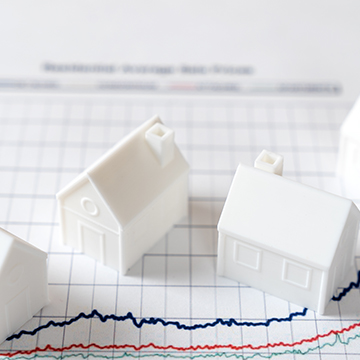 These challenges highlight the need for experienced local contractors and project managers who are familiar with the area’s regulations and supply chains.
These challenges highlight the need for experienced local contractors and project managers who are familiar with the area’s regulations and supply chains.
Investment Potential of Renovation Properties
Spain's real estate market, especially in historic areas, has proven resilient and profitable. Post-pandemic demand for rural retreats and stylish heritage accommodations has skyrocketed.
Buyers looking for a chateau for sale in Spain in need of renovation are increasingly converting these properties into hotels, cultural centers, and vacation rentals. With short-term and student rentals booming, a well-renovated historic property can yield higher rent and attract more discerning tenants or guests.
Moreover, foreign buyers—who made up over 15% of the market in 2023—are not deterred by renovation challenges. Their investment has helped revive villages and towns that were previously in decline.
If you’re considering a move to Spain or simply want to understand the buying process better, check out our detailed guide on buying property in Spain as an expat.
Reimagine, Restore, Reward
Reviving a historic Spanish home is not just about bricks and beams—it’s about restoring stories, celebrating culture, and creating something truly unique. Whether you’re drawn by the romantic idea of restoring old houses in Spain or are looking for a smart long-term investment, the rewards of renovation are tangible and lasting.
From renovation properties for sale in Spain to fully modernized heritage villas, the market offers something for every vision and budget. With proper planning, respect for history, and an understanding of local regulations, your restoration project can bring centuries-old beauty into the modern day. Contact us for a personalized consultation on finding your dream historic Spanish property.


